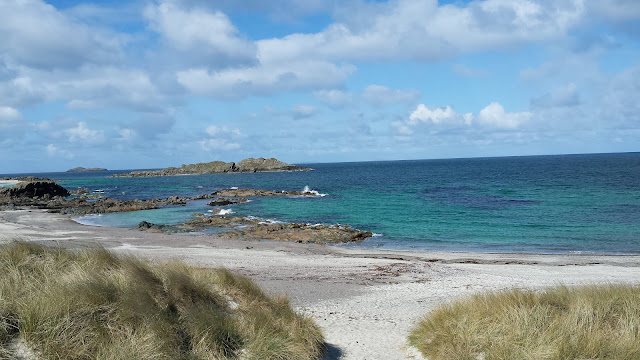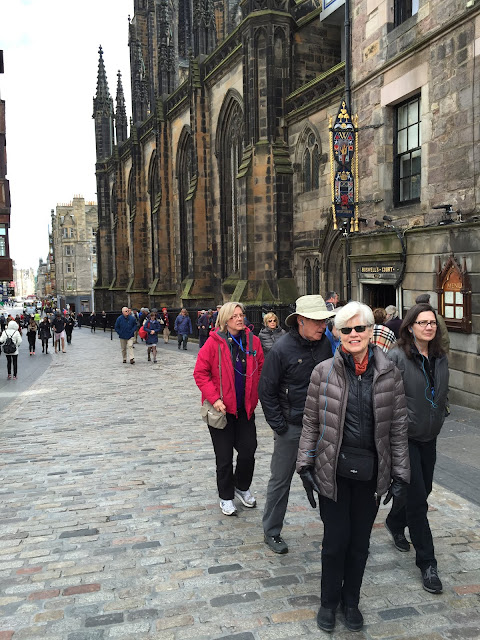St. David's Episcopal Church
Celtic Spirituality Pilgrimage
led by
Ken and Darlene Swanson
Day 14, April 17th: Arran and the Sannox Christian Center
Day 14, April 17th: Arran and the Sannox Christian Center
We drove from Glasgow early in the morning to catch a ferry to the Island of Arran. Arran is one of the Inner Hebrides Islands off the west coast of Scotland. Arran has a rich history stretching back to neolithic times. It was also a center of Celtic Christianity, beginning with St. Brendan in the 6th century. It is stunningly beautiful and is a favorite vacation spot for the Irish and British.
When we arrived on the island, we were met by George and Fiona Hazel, close friends of Ken and Darlene Swanson. They are the founders of the Sannox Christian Center. Sannox, on the northeastern shore of the island, was the site of a major Christian revival in the early 19th century. But due to the Highland Clearances, all of its residents were forced off the land. Most of Sannox's men, women and children emigrated to Canada, leaving Sannox empty of people. George Hazel had a vision to found a Christian center based on the principles of Celtic spirituality at this historic site of renewal. When he began, all that was there was a derelict church. Today the church and several residential buildings are in the process of restoration.
View of Brodick from the ferry.
Swans off the beach at Corrie.
When we arrived on the island, we were met by George and Fiona Hazel, close friends of Ken and Darlene Swanson. They are the founders of the Sannox Christian Center. Sannox, on the northeastern shore of the island, was the site of a major Christian revival in the early 19th century. But due to the Highland Clearances, all of its residents were forced off the land. Most of Sannox's men, women and children emigrated to Canada, leaving Sannox empty of people. George Hazel had a vision to found a Christian center based on the principles of Celtic spirituality at this historic site of renewal. When he began, all that was there was a derelict church. Today the church and several residential buildings are in the process of restoration.
The Sannox Church.
The church interior.

After church, Fiona hosted a time for tea and cakes.

Chatting with George.

George and Ken have been friends for over 40 years. George and Fiona visited St. David's, Roswell two years ago, where he gave a presentation on the Sannox vision for Celtic renewal. He is wearing a St. David's Men's Club shirt.


George's vision has resulted in many talented professional builders coming together to design and begin constructing a retreat center, thoroughly Christian but open to all, based on Celtic themes of personal prayer, hospitality and mission.
George sharing the design plans.
Later in the afternoon George led our pilgrims and members of the Sannox community in worship.
Ken celebrated the Eucharist.
Communicating the congregation.
After church, Fiona hosted a time for tea and cakes.

Chatting with George.

George and Ken have been friends for over 40 years. George and Fiona visited St. David's, Roswell two years ago, where he gave a presentation on the Sannox vision for Celtic renewal. He is wearing a St. David's Men's Club shirt.

We later caught a ferry back to the mainland and returned to Glasgow for our final night on the pilgrimage. Our coach driver Dave safely carried us on dozens of difficult, rural roads.
We will always remember the excellence and wit of our tour manager Siobhan McDonald. As one pilgrim said, "There are a thousand reasons to love Siobhan!"
Tomorrow we will be on our way home, changed forever by the Celtic vision of Christian faith.
Many thanks to our faithful readers for your prayers and support. God bless you! Please be on the lookout for news of our next pilgrimage to be in the spring of 2017.















































